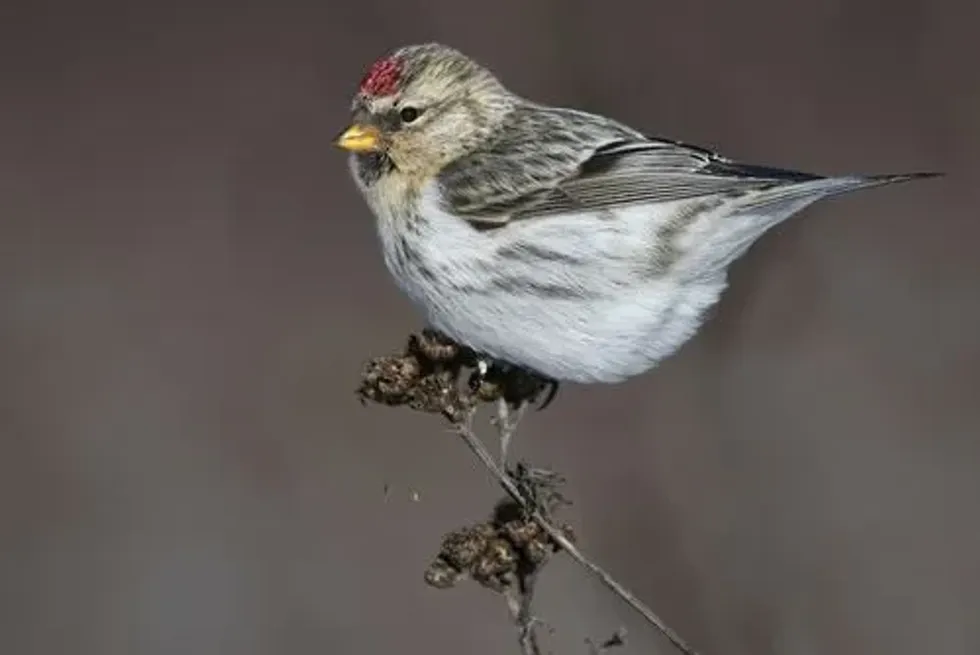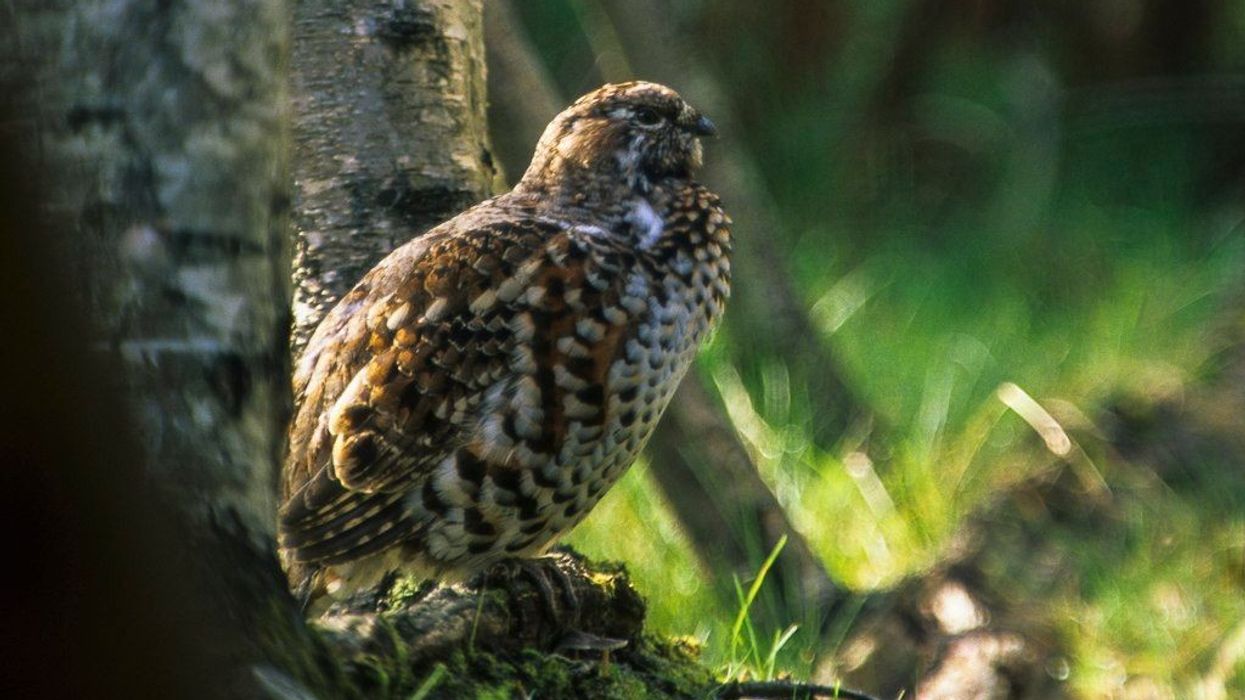Descendant of the family of finches, an Arctic redpoll or hoary redpoll (Acanthis hornemanni), is a species of migratory birds that can be further classified into two distinct subspecies, namely the Greenland Arctic redpoll and Coues' Arctic redpoll.
These birds are highly sturdy as they can withstand windy, bone-chilling months of winter and live in prolonged darkness. Normally, they remain aloof and solitary, but they also join flocks while foraging for seeds.
They migrate during the winter season when food is scarce and often fly off to the interior regions of Alaska.
This bird from the north is known to be one of the world's most resilient and can withstand severely cold temperatures. However, it is really difficult to trace these birds as they are pretty rare in areas inhabited by humans.
Factors like climate change and the destruction of habitat are major issues that pose a great threat to this species.
If you enjoyed these exciting facts about the hoary redpoll, then you can continue reading some more fun-filled facts about other species of birds such as the European robin and mockingbirds.
Hoary Redpoll Interesting Facts
What type of animal is a hoary redpoll?
A hoary redpoll (Acanthis hornemanni) is a species of bird belonging to the order Passeriformes, family Fringillidae.
What class of animal does a hoary redpoll belong to?
Hoary redpolls belong to the class Aves.
How many hoary redpolls are there in the world?
The number of hoary redpolls in current existence cannot be ascertained due to the lack of records. The accurate number of birds is not known, but redpolls can be classified into three species that function and form under one unified gene pool.
Where does a hoary redpoll live?
Hoary redpolls are difficult to trace as they live in far-off places often distant from human habitation. Nevertheless, these birds can be located in several parts of Canada, North America, Alaska (for migration), and mainly northern Greenland.
What is a hoary redpoll's habitat?
This species primarily inhabits edges of forest and woodland areas, thickets, and scrubs. They are mostly found in the Arctic tundra regions in Canada where there is an abundance of birch, alder, and spruce trees.
During the breeding season, they fly off to the northern parts of America. They can also be traced in fallow lands and fields in villages, suburban towns, and cities as they engage in foraging in huge flocks.
Who do Hoary redpolls live with?
Hoary redpolls can be seen moving in flocks while foraging or looking for food. This is a pretty common sight even during the breeding periods. This species even mingle with herds of common redpolls in times of winter, traveling long distances in search of seeds.
How long does a hoary redpoll live?
Very similar to a common redpoll, these birds live for an approximate period of seven to eight years in the wild.
How do they reproduce?
The time between May to July is the ideal season for breeding. Males indulge in elaborate courtships, wooing the female. After the breeding process, females engage in building the nest, usually among shrubs or tree cavities.
These nests are generally at a low elevation that ranges from 2-3 ft (61-91 cm) from the surface. Females give birth to a clutch of four to five eggs. The hatching stays under the care of the parents until they can forage for themselves.
What is their conservation status?
The International Union for Conservation of Nature (IUCN) Red List has not yet recorded the preservation status of these North American birds. They are Not Evaluated under the IUCN, but according to the Partners in Flight organization, the conservation of this species is currently a matter of least concern.
Hoary Redpoll Fun Facts
What do Hoary Redpolls look like?
An Arctic redpoll identification becomes difficult owing to its similarities with the common redpoll. Hoary redpolls possess a frosty white plumage with a red spot on their crown and black-brown streaks in the under-tail coverts.
These birds are paler and have a comparatively larger bill than common redpolls. Additionally, male common redpolls bear deep reddish patches on their chest, while these patches are not very significant in the latter.
The color of their body makes it all the more challenging to trace them in the snowy regions. While hoary redpolls possess a more frosty appearance with muted black and brown colors, common redpolls come in darker shades of brown or tan.
How cute are they?
Hoary redpolls are fluffy birds that define cuteness. Although they come in pale white, they possess a very soothing appearance which makes them extremely adorable.
How do they communicate?
These northern birds vocalize through different calls that include flight calls and food calls. Sounds include a normal 'cherp-cherp', a repetitive 'che-che-che-tschrrrr', or an alarming call, 'pii'. They make an array of sounds that can be a high-pitched trill or even a nasal whistle.
How big is a hoary redpoll?
The length of a small bird like a hoary redpoll ranges between 4.7-5.5 in (12-14 cm). They are larger than hummingbirds and sun conures but smaller than purple finches.
How fast can a hoary redpoll fly?
The flight speed of these birds is yet to be ascertained. There are no records of the accurate details of its swiftness in flight.
How much does a hoary redpoll weigh?
The average weight of these birds ranges from 0.4-0.7 oz (11-20 g), inclusive of both genders.
What are the male and female names of the species?
Males and females of this species do not bear any special attributions. Just like with other bird species, they are called male and female hoary redpolls, respectively.
What would you call a baby hoary redpoll?
A baby hoary redpoll is normally called a hatchling or nestling.
What do they eat?
Hoary redpolls enjoy a diet primarily comprising seeds or buds from cotton grass, alder, willow, pigweed, alder, and knotweed.
Are they dangerous?
This species of northern finches are not known to be aggressive or violent. However, a detailed study is needed to provide evidence about their behavior patterns.
Would they make a good pet?
Hoary redpolls are not very common pets. They can be rarely traced among human beings as they prefer to stay in the stranded and isolated shrubs, thickets, and in chilly Arctic tundra regions where human interference is minimal.
Moreover, they are birds of the wilderness habituated to the untamed life of freedom, so it is unknown how well they would behave as an encaged pet.
Did you know...
The Arctic redpoll, scientifically termed Acanthis hornemanni (order Passeriformes, family Fringillidae), has a particular connotation attached to its name. The bird received its name owing to its frost-like white plumage.
The term 'hoarfrost' is used for the magnificent crystals of ice that are visible during frosty months. Since the bird can tolerate extreme cold winters in the tundra regions, they have been attributed this name. The redpoll indicates the small red speck on its crown.
How are hoary redpolls affected by climate change?
Depending upon the surveys, scientists think that this bird species might lose 82% of its habitat range (during summer), while in winter the range of loss has been defined at 65% shortly. Climate change is a major factor that determines the population of this species.
Due to climate change, a vast population might become affected and lose their habitat which would contribute to making this bird species vulnerable to extinction.
What are the other species of redpolls?
There are three species of redpolls, namely the lesser redpoll, hoary or Arctic redpoll, and common redpoll. All three bird species belong to the family of finches.
The Arctic redpoll draws a lot of similarities with a common redpoll. The two bird species are somewhat alike in their appearance, with a slight difference in the colors and shades. Arctic redpolls have a larger bill and have a pale white shade with lighter brownish streaks, while common redpolls possess darker brown shades throughout their body.
Like hoary redpolls, the lesser redpoll and common redpoll feed mainly on seeds. However, among all three species of finches, lesser redpolls maintain close contact with humans as they are often found visiting bird feeders during food shortages, especially during the winter season.
Here at Kidadl, we have carefully created lots of interesting family-friendly animal facts for everyone to discover! Learn more about some other birds including the great frigatebird or robin.
You can even occupy yourself at home by drawing one on our hoary redpoll coloring pages.










